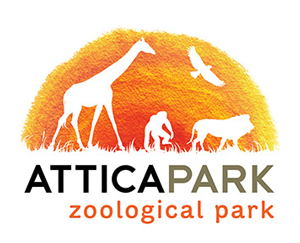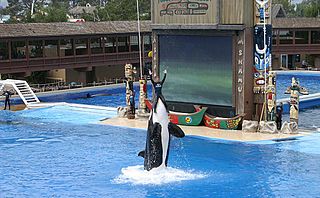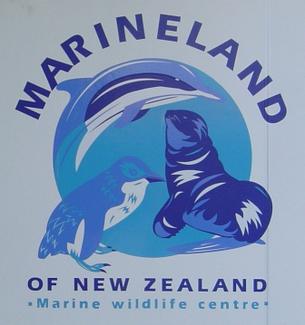
A dolphin is an aquatic mammal within the infraorder Cetacea. Dolphin species belong to the families Delphinidae, Platanistidae, Iniidae, Pontoporiidae, and possibly extinct Lipotidae. There are 40 extant species named as dolphins.

Marine mammals are aquatic mammals that rely on the ocean and other marine ecosystems for their existence. They include animals such as cetaceans, pinnipeds, sirenians, sea otters and polar bears. They are an informal group, unified only by their reliance on marine environments for feeding and survival.

Bottlenose dolphins are aquatic mammals in the genus Tursiops. They are common, cosmopolitan members of the family Delphinidae, the family of oceanic dolphins. Molecular studies show the genus definitively contains three species: the common bottlenose dolphin, the Indo-Pacific bottlenose dolphin, and Tamanend's bottlenose dolphin. Others, like the Burrunan dolphin, may be alternately considered their own species or be subspecies of T. aduncus. Bottlenose dolphins inhabit warm and temperate seas worldwide, being found everywhere except for the Arctic and Antarctic Circle regions. Their name derives from the Latin tursio (dolphin) and truncatus for their characteristic truncated teeth.

Oceanic dolphins or Delphinidae are a widely distributed family of dolphins that live in the sea. Close to forty extant species are recognised. They include several big species whose common names contain "whale" rather than "dolphin", such as the Globicephalinae. Delphinidae is a family within the superfamily Delphinoidea, which also includes the porpoises (Phocoenidae) and the Monodontidae. River dolphins are relatives of the Delphinoidea.

A military marine mammal is a cetacean or pinniped that has been trained for military uses. Examples include bottlenose dolphins, seals, sea lions, and beluga whales. The United States and Soviet militaries have trained and employed oceanic dolphins for various uses. Military marine mammals have been trained to rescue lost naval swimmers, guard navy ships against enemy divers, locate mines for later clearance by divers, and aid in location and recovery of equipment lost on the seabed.

A dolphinarium is an aquarium for dolphins. The dolphins are usually kept in a pool, though occasionally they may be kept in pens in the open sea, either for research or public performances. Some dolphinaria consist of one pool where dolphins perform for the public, others are part of larger parks, such as marine mammal parks, zoos or theme parks, with other animals and attractions as well.

Attica Park, officially Attica Zoological Park (AZP), is a private zoo located in the suburb of Spata, approximately 20 kilometres (12 mi) east of Athens, Greece. It is the only zoo in Greece. The zoo is home to more than 1,500 animals representing 220 species, in an area of 20-hectares. It is open 365 days a year.

Dolphin drive hunting, also called dolphin drive fishing, is a method of hunting dolphins and occasionally other small cetaceans by driving them together with boats and then usually into a bay or onto a beach. Their escape is prevented by closing off the route to the open sea or ocean with boats and nets. Dolphins are hunted this way in several places around the world including the Solomon Islands, the Faroe Islands, Peru, and Japan, which is the most well-known practitioner of the method. In large numbers dolphins are mostly hunted for their meat; some end up in dolphinariums.

A marine mammal park is a commercial theme park or aquarium where marine mammals such as dolphins, beluga whales and sea lions are kept within water tanks and displayed to the public in special shows. A marine mammal park is more elaborate than a dolphinarium, because it also features other marine mammals and offers additional entertainment attractions. It is thus seen as a combination of a public aquarium and an amusement park. Marine mammal parks are different from marine parks, which include natural reserves and marine wildlife sanctuaries such as coral reefs, particularly in Australia.
The Duisburg Zoo, founded on 12 May 1934, is one of the largest zoological gardens in Germany. It is especially well known for its dolphinarium and, since 1994, for breeding koalas.

The Marineland of Antibes is a theme park founded in 1970 by Count Roland de La Poype in Antibes (Alpes-Maritimes), in the French Riviera. Covering 26 hectares, it includes a marine zoological park with dolphinarium, a water park (Aquasplash), a children's play park, mini golf and a hotel. It is the property of the Spanish multinational company Parques Reunidos, whose majority shareholder is the British investment fund Arle Capital Partners. The current director is Arnaud Palu.

Marineland of New Zealand was a marine mammal park in Napier, New Zealand. The park opened in 1965 and closed to the public in 2008. During the time it was open, Marineland housed several species of native and introduced marine wildlife, most notably including the common dolphin.

Dubai Zoo was a 1.5-kilometre (0.93 mi) zoo located in Dubai, United Arab Emirates. It was originally built in 1967 by a Dubai resident when Sheikh Rashid bin Maktoum, the late Ruler of Dubai, permitted Otto J. Bulart to build a zoo on a 2-hectare (4.9-acre) plot in Jumeirah. It is still the oldest zoo in the Arabian Peninsula. It was considered a Dubai landmark in the late 1960s as it indicated the "town's end".

Planète Sauvage is a zoological park situated in the French Atlantic coast, in Port-Saint-Père near Nantes, in the Loire-Atlantique departement. Founded in 1992 by Monique and Dany Laurent and known as the Safari Africain until 1998, it was then operated by the Compagnie des Alpes between 2005 and 2015. Since that date the park has been the property of the multinational company Looping Group, whose main shareholder is a Belgian private equity fund of the Groupe Bruxelles Lambert. Its director is Philippe Vignaud.

The Taiji dolphin drive hunt is based on driving dolphins and other small cetaceans into a small bay where they can be killed or captured for their meat and for sale to dolphinariums. The new primary killing method is done by cutting the spinal cord of the dolphin, a method that claims to decrease the mammal's time to death. Taiji has a long connection to whaling in Japan. The 2009 documentary film The Cove drew international attention to the hunt. Taiji is the only town in Japan where drive hunting still takes place on a large scale.

Dubai Safari Park is an eco-friendly safari park located in Dubai, United Arab Emirates. The park's major source of energy is solar energy. The park is located on Al Warqa 5 on the Hatta Road.
Dolphin are hunted in Malaita in the Solomon Islands in the South Pacific, mainly for their meat and teeth, and also sometimes for live capture for dolphinariums. Dolphin drive hunting is practised by coastal communities around the world; the animals are herded together with boats and then into a bay or onto a beach. A large-scale example is the Taiji dolphin drive hunt, made famous by the Oscar-winning documentary film The Cove. The hunt on South Malaita Island is smaller in scale. After capture, the meat is shared equally between households. Dolphin teeth are also used in jewelry and as currency on the island.
Gulf World Marine Park is a dolphinarium located in Panama City Beach, Florida. It has been open since 1970, and is one of only a few institutes in the United States to house rough-toothed dolphins.
















